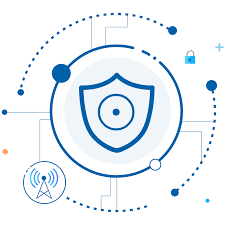Understanding Diameter Security: Safeguarding Modern Telecom Networks
In today’s rapidly evolving telecommunications landscape, securing signaling protocols has become a top priority. One such protocol, Diameter, is central to the functioning of modern networks, particularly in 4G LTE and 5G architectures. As the successor to the older SS7 (Signaling System No. 7), Diameter is more versatile and scalable, enabling crucial functions like authentication, authorization, and accounting (AAA) across networks. However, with its increased capabilities come new security challenges that need to be addressed to protect the integrity of communications.
What is Diameter Security?
Diameter Security is a signaling protocol used primarily within IP-based networks for handling AAA functions. It facilitates interactions between different network elements such as the Home Subscriber Server (HSS), Policy and Charging Rules Function (PCRF), and other key components. Its role is critical in managing subscriber information, enforcing policies, and ensuring seamless roaming between networks.
However, as essential as it is, Diameter is also a target for various security threats. Without proper security measures, networks using the Diameter protocol are vulnerable to attacks that could lead to data breaches, service disruptions, and unauthorized access to sensitive information.
The Importance of Diameter Security
The transition to 4G and 5G networks has amplified the importance of Diameter security. The protocol’s extensive use in handling sensitive subscriber data makes it a prime target for cybercriminals. Potential threats include:
Man-in-the-Middle (MitM) Attacks: Hackers can intercept and manipulate Diameter messages between network elements, leading to unauthorized access or service disruption.
Denial of Service (DoS) Attacks: By overwhelming network elements with fake or malformed Diameter messages, attackers can disrupt services, leading to significant downtime and loss of revenue.
Impersonation Attacks: If an attacker gains control of a network element, they can send fraudulent Diameter messages, potentially gaining unauthorized access to network resources.
Key Strategies for Diameter Security
To combat these threats, robust Diameter security strategies are essential. Here are some key measures that can help protect networks:
Encryption and Authentication: Implementing Transport Layer Security (TLS) or Internet Protocol Security (IPsec) ensures that Diameter messages are encrypted and authenticated, preventing unauthorized access and MitM attacks.
Message Filtering: Network operators should deploy firewalls specifically designed for Diameter traffic. These firewalls can filter out malicious or malformed messages, protecting against DoS attacks and ensuring only legitimate traffic is allowed.
Rate Limiting and Traffic Shaping: By controlling the rate of Diameter message traffic, networks can prevent DoS attacks and maintain service availability even under attack.
Regular Audits and Updates: Security is not a one-time setup. Regular audits of the Diameter network elements and timely updates are crucial to stay ahead of emerging threats.
Anomaly Detection: Implementing systems that can detect unusual patterns or anomalies in Diameter traffic can help in identifying and mitigating potential security breaches early.
The Future of Diameter Security
As networks continue to evolve with the deployment of 5G, the role of Diameter and its security will remain critical. With the increasing complexity of telecom networks and the growing sophistication of cyber threats, network operators must prioritize Diameter security. Investing in advanced security solutions and staying updated on the latest threats will be key to maintaining a secure and reliable communication network.
In conclusion, Diameter security is a fundamental aspect of modern telecommunications. As we move further into the era of 5G, ensuring that Diameter-based communications are secure will be crucial for protecting both network infrastructure and the sensitive data of millions of users worldwide.




Comments
Post a Comment